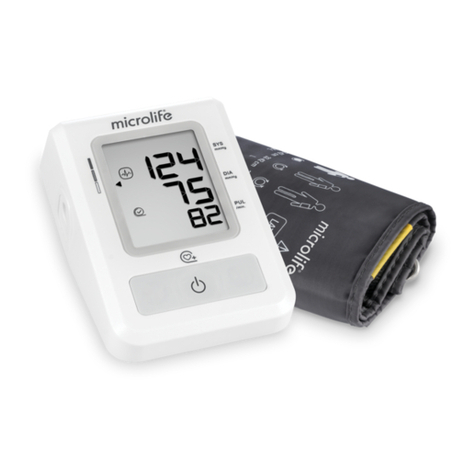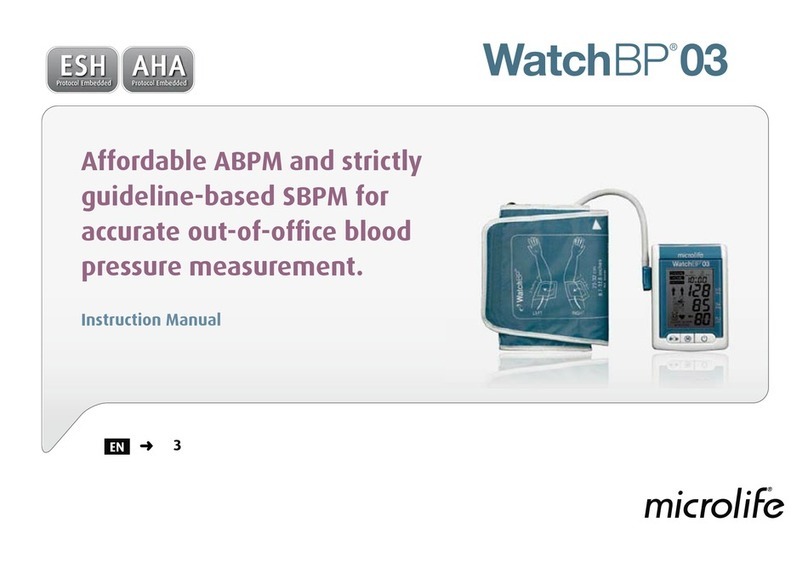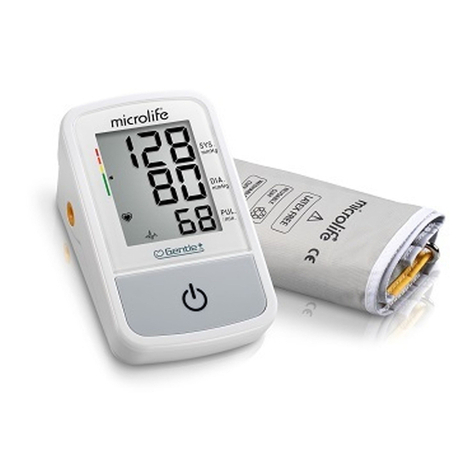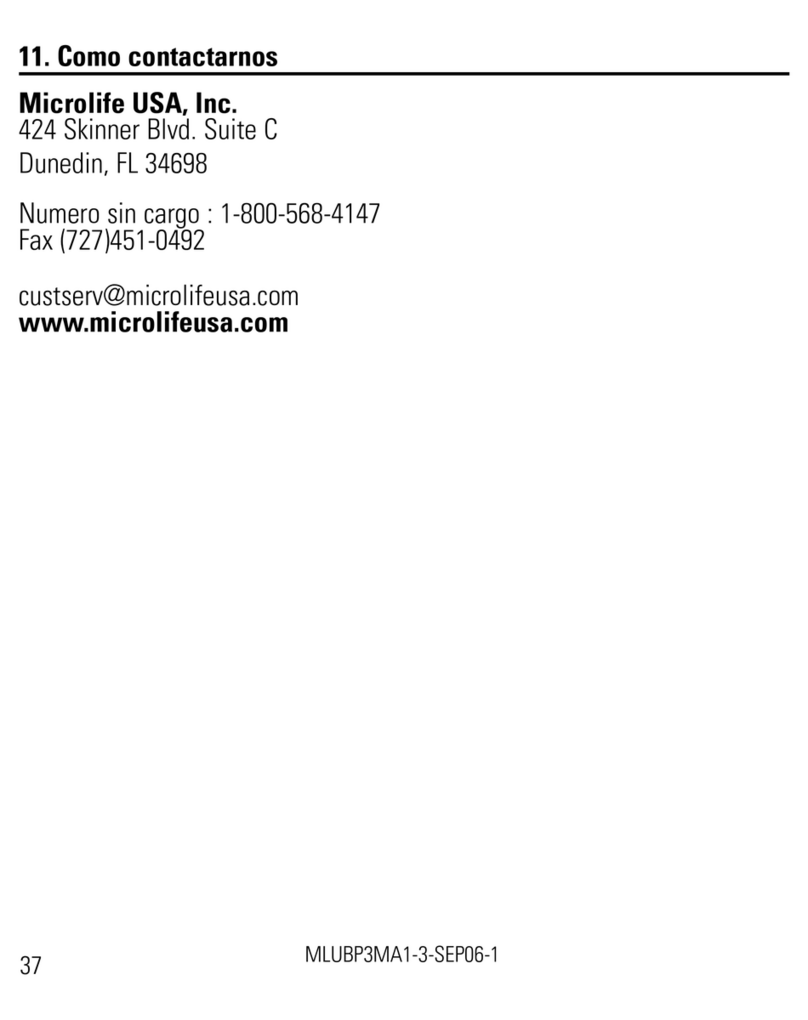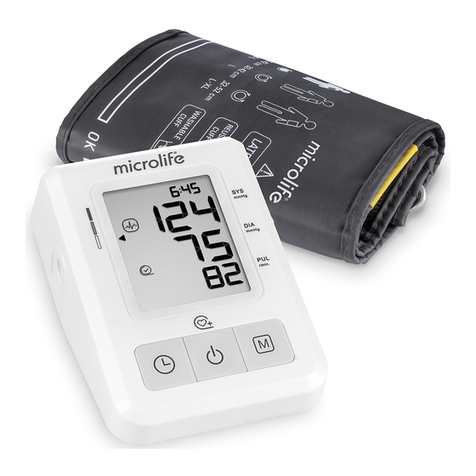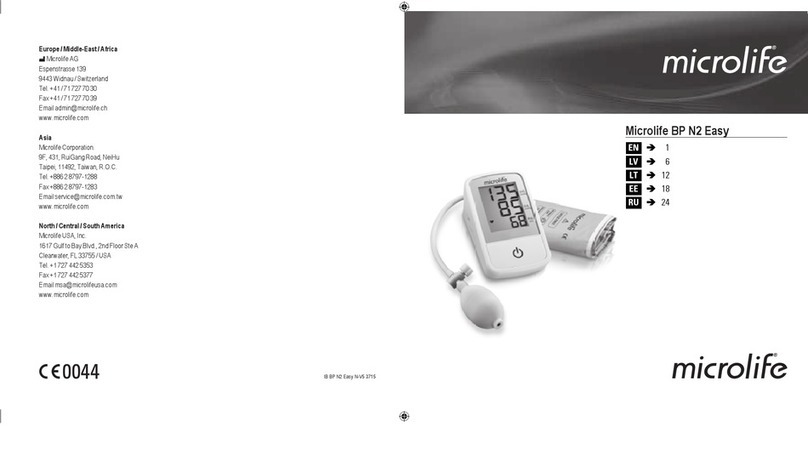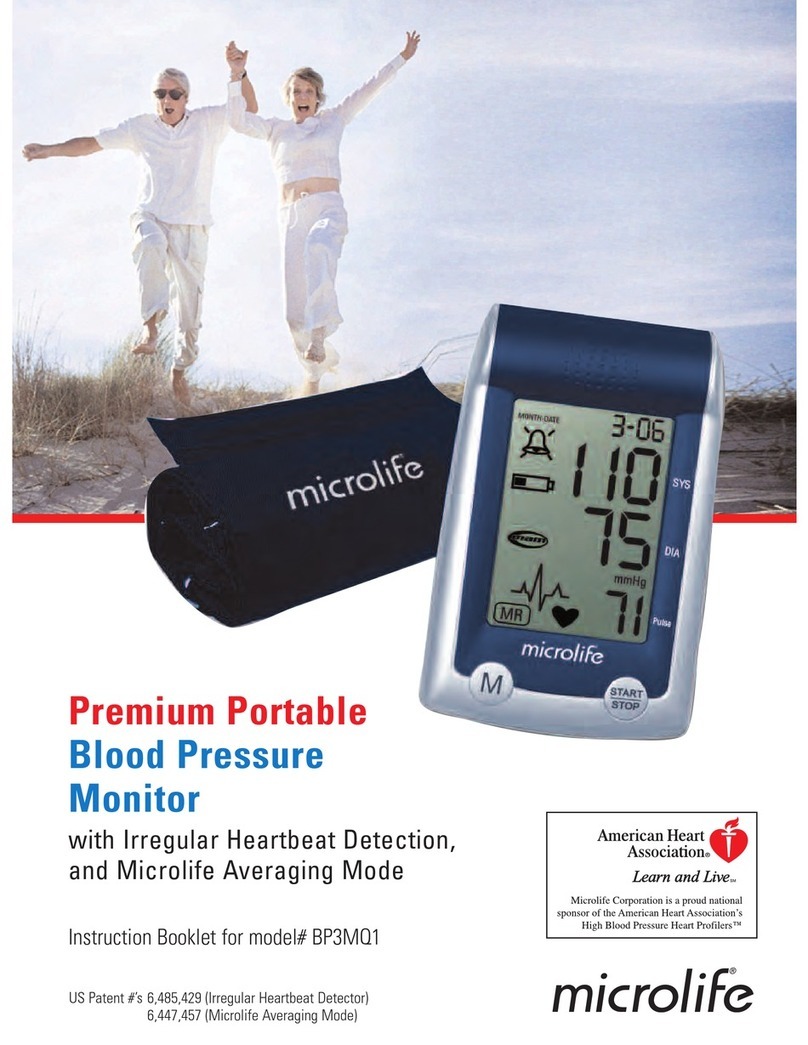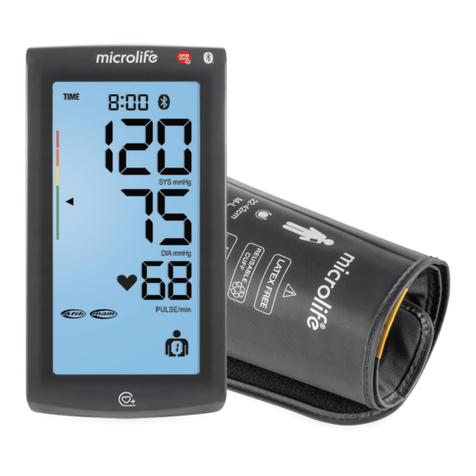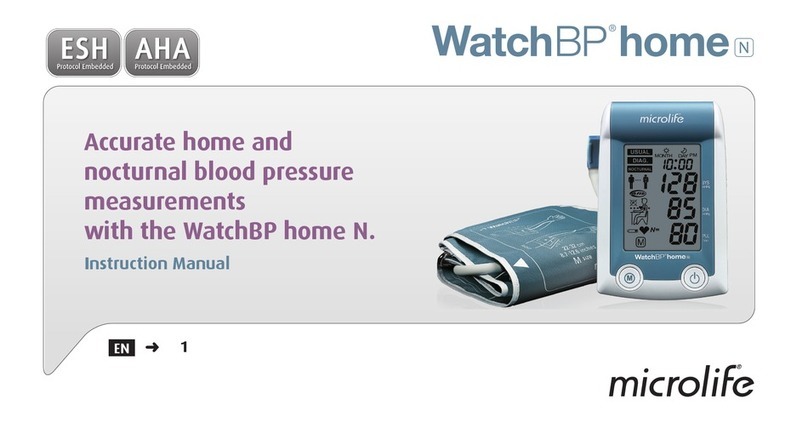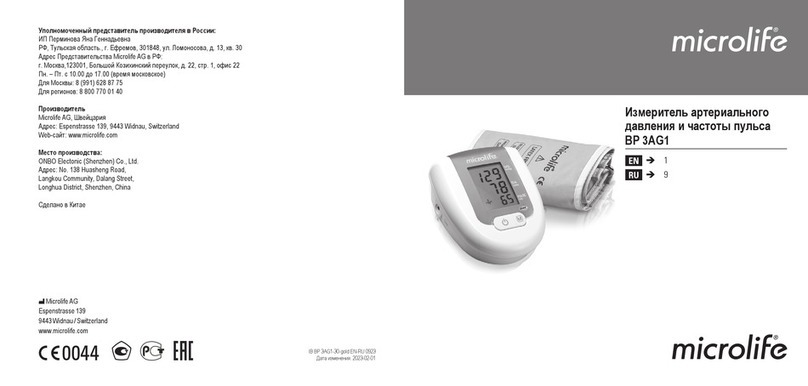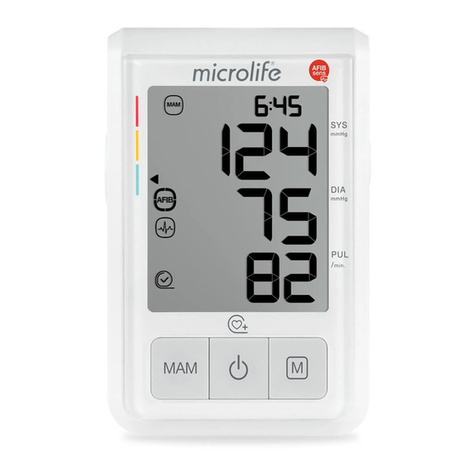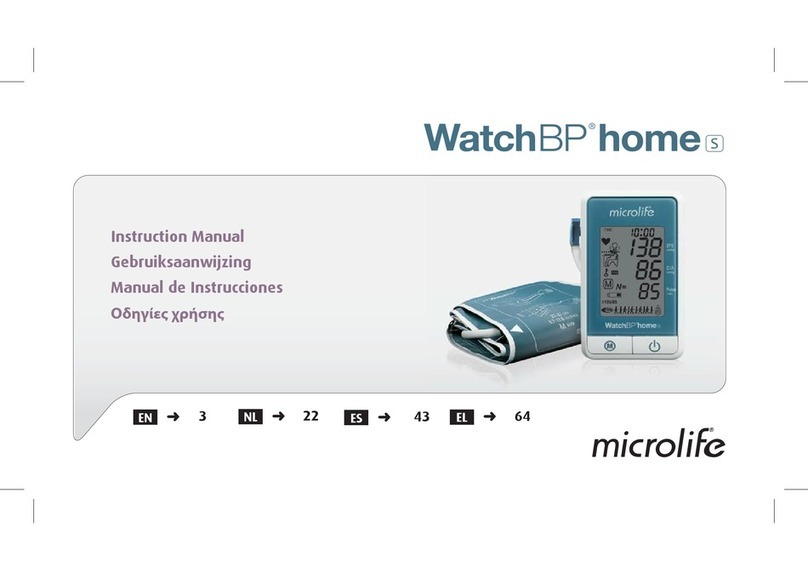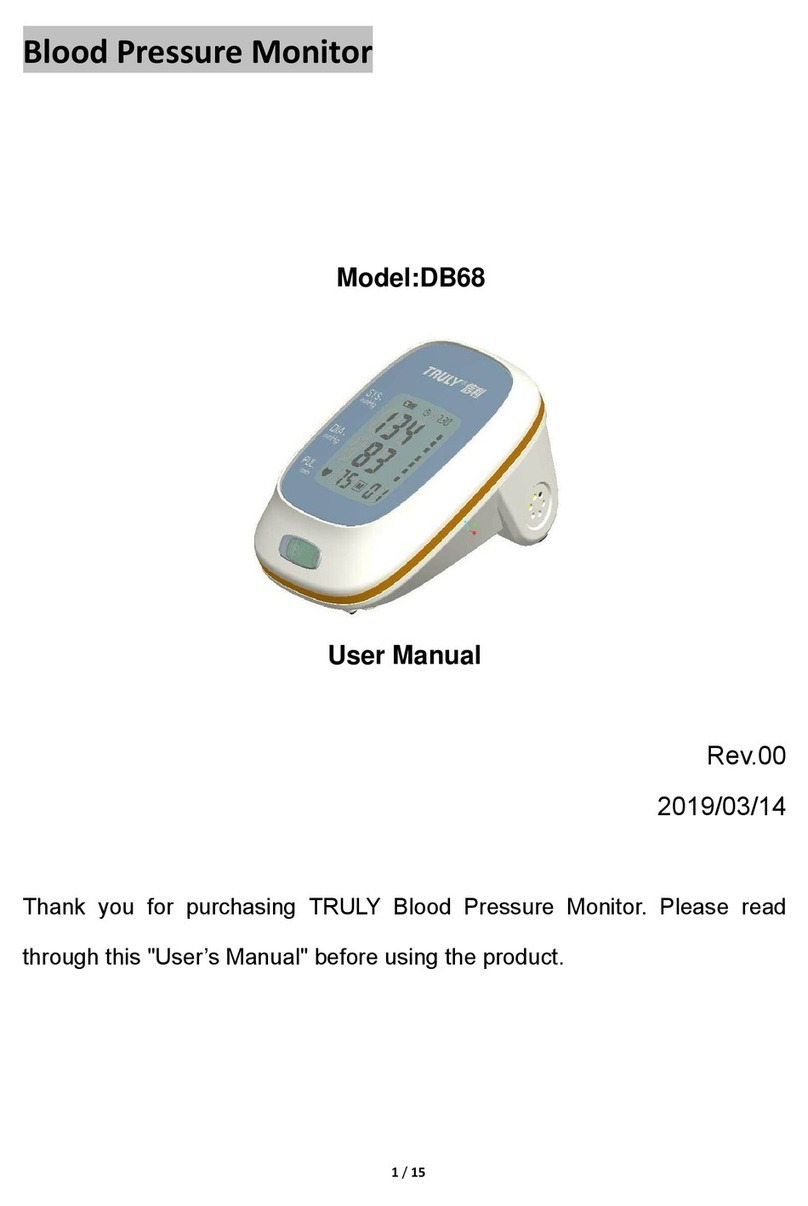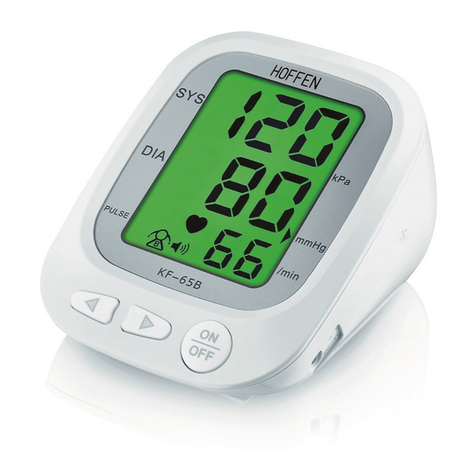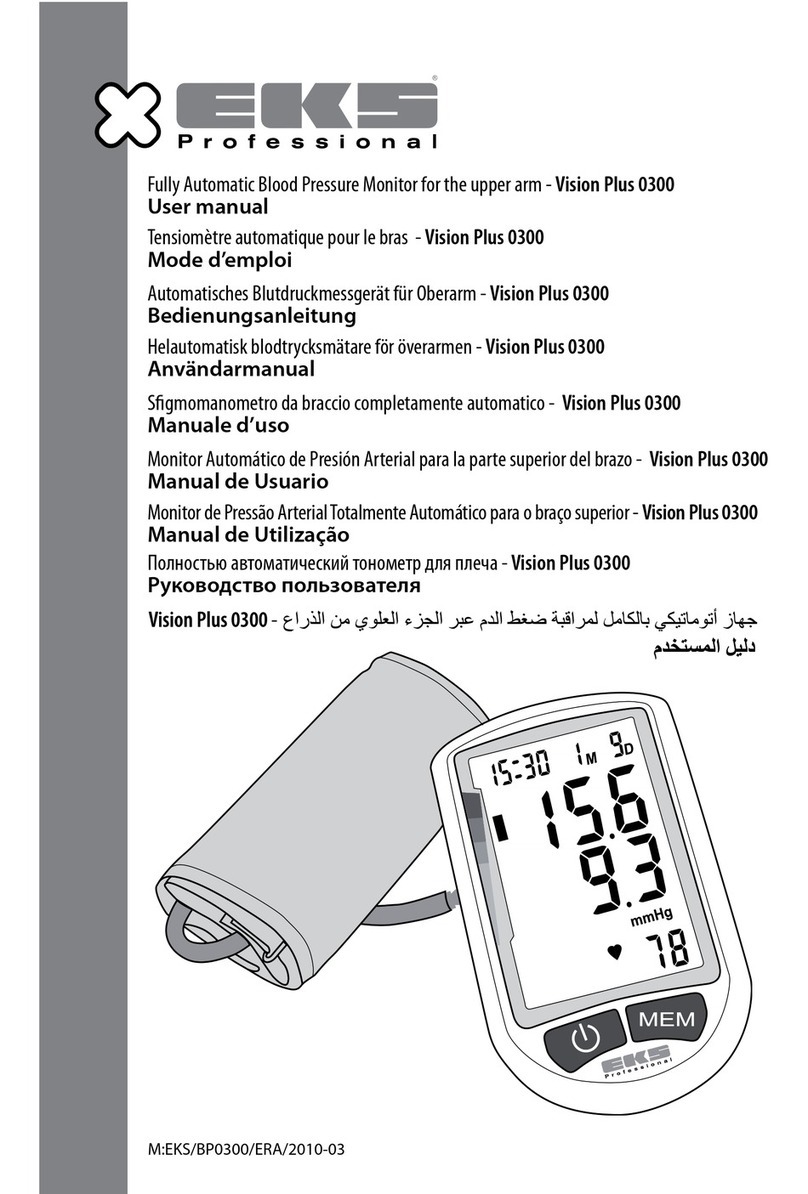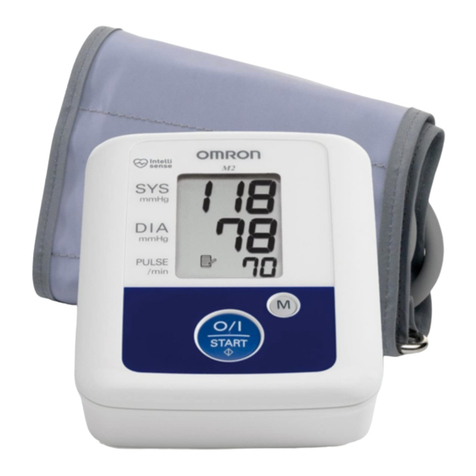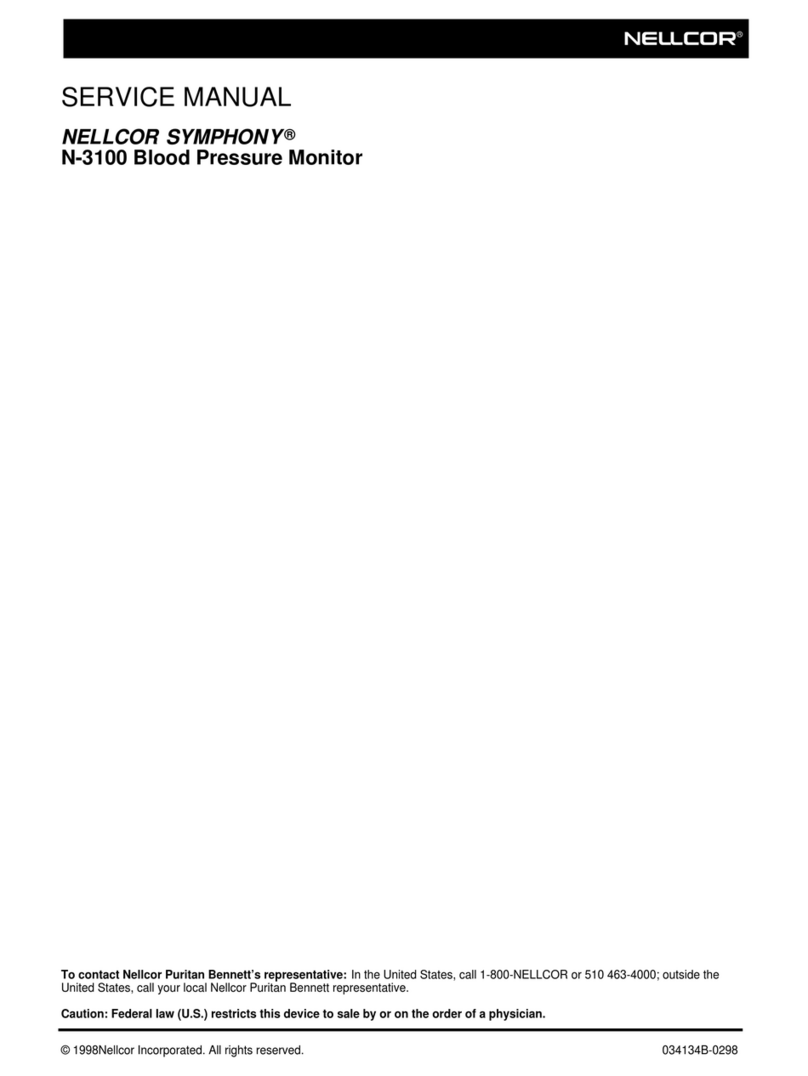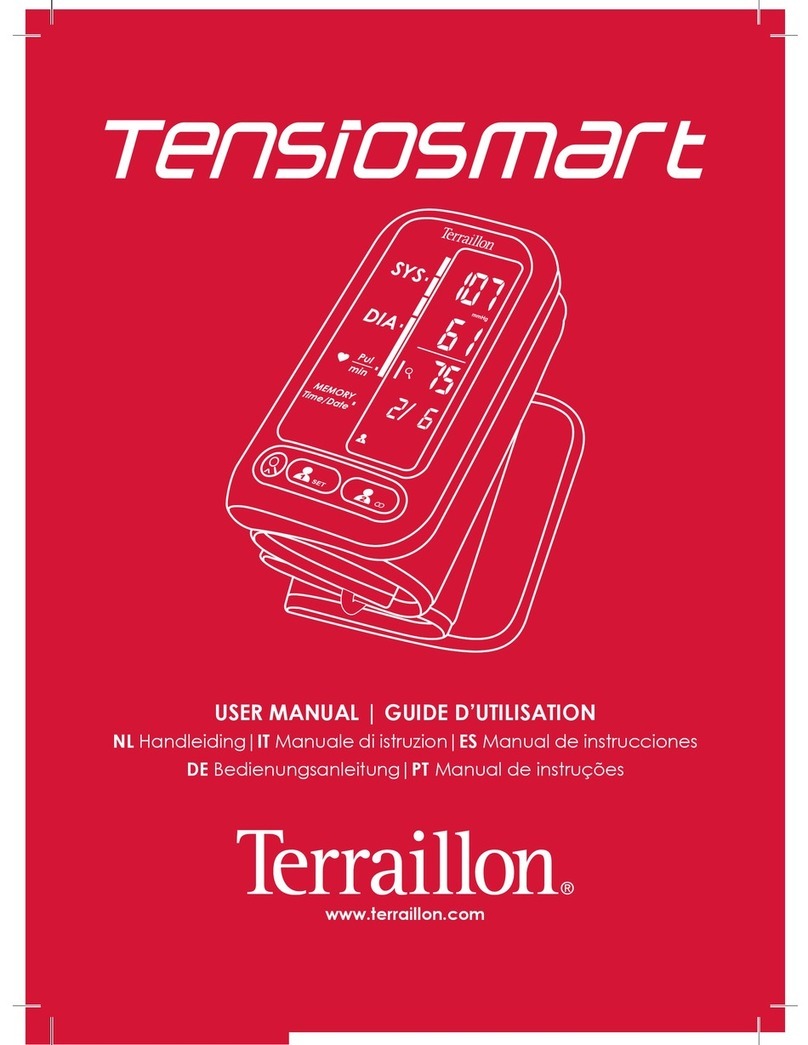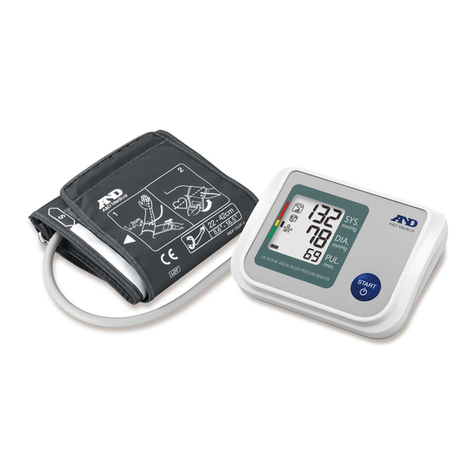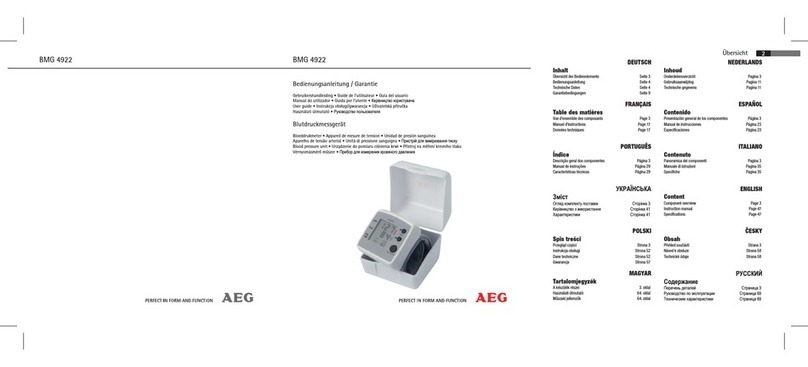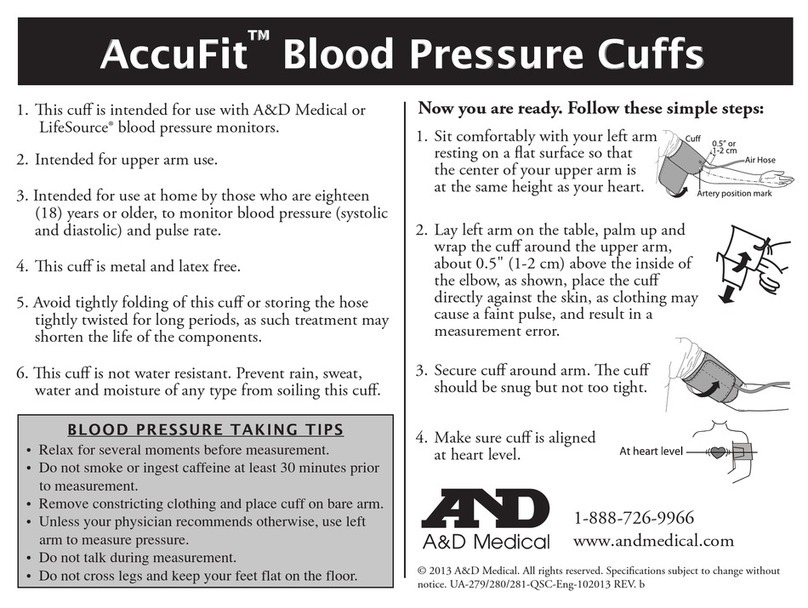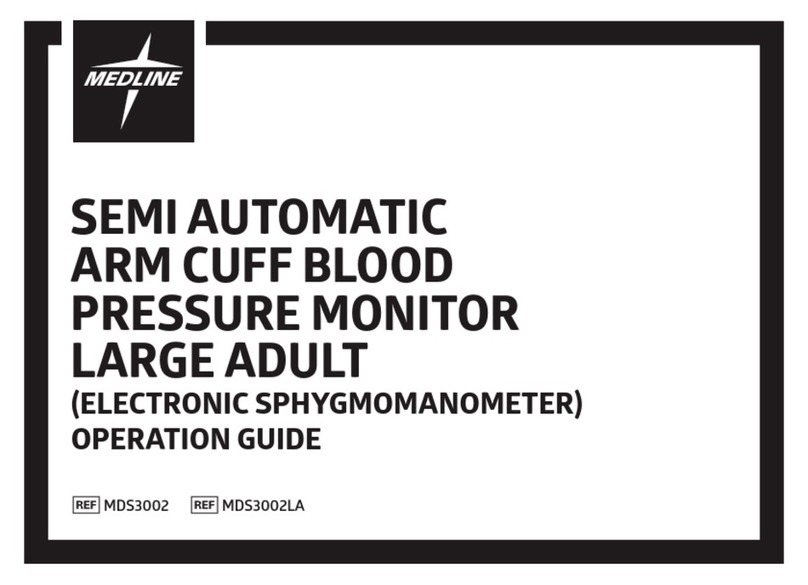5
4
2.1 How does high/low blood pressure arise?
Your level of blood pressure is determined in the circulatory center of
the brain and adjusts to a variety of situations through feedback from
the nervous system. To adjust blood pressure, the strength and
frequency of the heart (Pulse), as well as the width of circulatory blood
vessels is altered. Blood vessel width is effected by way of fine
muscles in the blood vessel walls. Your level of arterial blood
pressure changes periodically during heart activity. During the "blood
ejection" (Systole), the value is highest (systolic blood pressure value).
At the end of the heart’s "rest period" (Diastole) pressure is lowest
(diastolic blood pressure value). Your blood pressure values must lie
within certain normal ranges in order to prevent particular diseases.
2.2 Which values are normal?
Blood pressure is too high if your diastolic pressure is above 90 mmHg
and/or your systolic blood pressure is over 160 mmHg, while at rest. In
this case, please consult your physician immediately. Long-term values
at this level endanger your health through continual damage to the
blood vessels in you body. Should your systolic blood pressure values
lie between 140 mmHg and 160mmHg and/or your diastolic blood
pressure values lie between 90 mmHg and 95mmHg. Consult your
physician. Regular self-checks will be necessary. If you have blood
pressure values that are too low, (i.e., systolic values under 105mmHg
and/or diastolic values under 60 mmHg), consult your physician. Even
with normal blood pressure values, a regular self-check with your
blood pressure monitor is recommended. You can detect possible
changes in your values early and react appropriately. If you are under-
going medical treatment to control your blood pressure, keep a record
of values along with time of day and date. Show these values to your
physician. Never use the results of your measurements to inde-
pendently alter the drug doses prescribed by your physician.
Which values are normal?
Range Systolic Blood Pressure Diastolic Blood Pressure Measures
Hypotension (low) Lower than 100 Lower than 60 Consult your doctor
Normal Range Between 100 and 140 Between 60 and 90 Self-check
Mild Hypertension (high) Between 140 and 160 Between 90 and 100 Consult your doctor
Moderately Serious Between 160 and 180 Between 100 and 110 Consult your doctor
Hypertension (higher)
Serious Hypertension Higher than 180 Higher than 110 Consult your doctor
(very High) URGENTLY
Specific Systolic Higher than 140 Lower than 90 Consult your doctor
Hypertension (World Health Organization)
☞Further information
• If your values are mostly normal under resting conditions but excep-
tionally high under conditions of physical or psychological stress, it is
possible that your are suffering from so-called "labile hypertension."
Consult your physician.
• Correctly measured diastolic blood pressure values above 120mmHg
require immediate medical treatment.
2.3 What can be done if regular high/low values are obtained?
a) Consult your physician.
b) Increased blood pressure values (various forms of hypertension) are
associated with considerable health risks over time. Arterial blood ves-
sels in your body are endangered due to constrictions caused by
deposits in the vessel walls (Arteriosclerosis). A deficient supply of
blood to important organs (heart, brain, muscles) can result.
Furthermore, the heart will become structurally damaged with
increased blood pressure values.
c) There are many different causes of high blood pressure. We differenti-
ate between the common primary (essential) hypertension, and sec-
ondary hypertension. Secondary hypertension can be ascribed to spe-
cific organ malfunctions. Please consult your physician for information
about the possible origins of your own increased blood pressure val-
ues.
